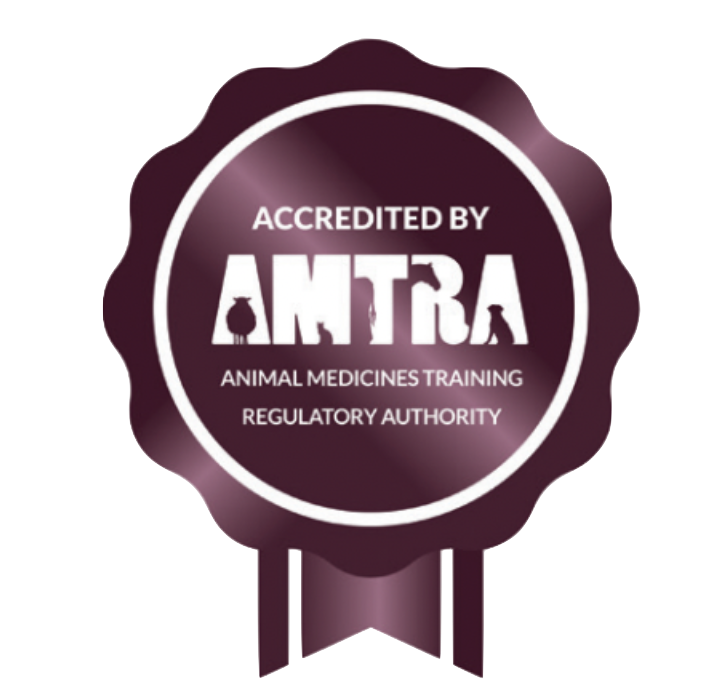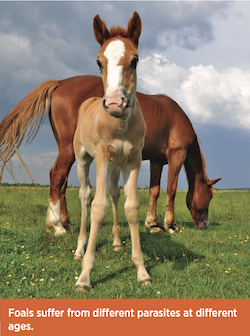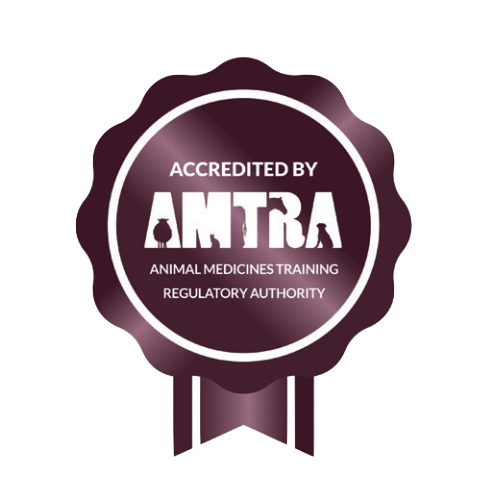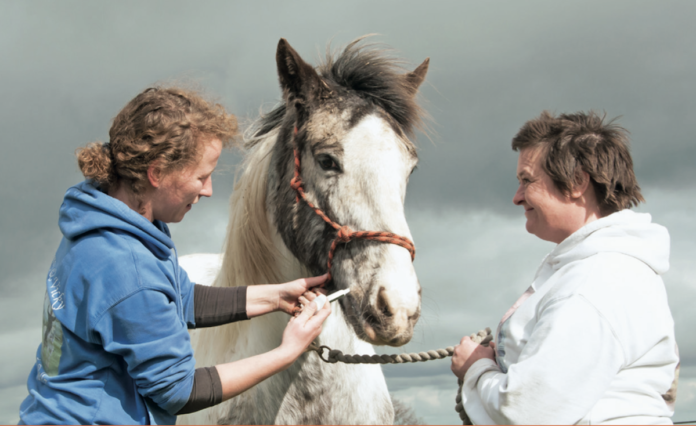RESISTANCE AND WHAT IT MEANS FOR THE FUTURE OF WORM CONTROL

By Zoetis vet Wendy Talbot
AMTRA is required by the Veterinary Medicines Regulations to ensure its RAMAs/SQPs undertake CPD. All RAMAs/SQPs must earn a certain number of CPD points in a given period of time in order to retain their qualification. RAMAs/SQPs who read this feature and submit correct answers to the questions below will receive two CPD points. For more about AMTRA and becoming a RAMA/SQP, visit www.amtra.org.uk
Growing resistance to dewormers presents a serious risk to the future health and welfare of horses worldwide, and this is why it is essential for you to continually keep up-to-date with best practice advice for worm control.
But what exactly does this mean on a practical level for you as a RAMA/SQP when you are dispensing advice and prescribing dewormer products to your customers?
EXPLAINING RESISTANCE
Helping your customers to understand the concept of resistance is a good discussion- opener and will enable you to clear up the common misconception that it’s the horse itself who develops resistance.

Resistance is the term used when a parasite population previously controlled by a drug is no longer susceptible to that drug. The active ingredient of the horse wormer kills the sensitive parasites in the population, but those parasites not affected go on to create new generations of resistant parasites.¹
Resistance affects the population of parasites which are found on the pasture. This means that eventually any horse grazing that pasture may pick up an infection of worms which cannot be effectively treated with the currently available dewormers.¹
The incorrect use of wormers, including under-dosing, can cause resistance to occur, as can the effectiveness of the wormer.¹
However, the biggest cause of resistance is the indiscriminate overuse of de-wormers. Every time a de-wormer is administered, it is only the usually small number of resistant parasites within that horse that will survive and multiply to contaminate the land with new resistant worms. If this situation is repeated again and again then the majority of the parasites on that field or yard can become resistant to treatment.¹
Your customer will be pleased to hear the good news is that resistance does not occur overnight and there are some easy ways that they can alter their worming strategy to help to prolong the effectiveness of de-worming products on their yard.
DIAGNOSTIC-LED TREATMENT
The way forward for the for the control of small strongyles is to use diagnostic-led treatment wherever possible. This is now recognised as the gold standard for worm control.2,3
Diagnostic-led treatment utilises faecal egg counts (FECs), antibody and blood tests, preferably with a yearly risk assessment from a vet. This treatment option is particularly suitable for yards with a good management routine that includes frequent poo-picking (at least twice per week), low stocking densities, mature healthy horses with no illnesses, low FECs and regular cross grazing to keep pastures clean. 2,3
ASSESSING THE RISKS
As a RAMA/SQP you will need to focus on five specific things when risk assessing the circumstances of your customer’s horse:
Results of egg counts and antibody tests will be analysed and classified for each individual and those sharing the same grazing space.
Illness history will be considered, specifically previous parasitic disease and colic.
Stocking densities will also be taken into consideration.
Key worming plan: the current worm control methods will be discussed, including pasture management and the quarantine of new horses.
Year: the age of each horse will be noted – horses of less than five years old being at highest risk in terms of age alone.
The acronym ‘RISKY’ will help you to remember these points.
Each should be classified as low, medium or high risk for disease or with the potential to further contaminate the pasture with eggs passed in the droppings (egg-shedding): 2,4,5
TO DOSE OR NOT TO DOSE
The risk assessment results may identify some horses as needing administration of a dewormer containing moxidectin for single dose control of roundworms - including encysted larval stages of small redworms, and bots.
Examples include high risk horses who would need a dose administered in late autumn/early winter and/or spring to control encysted stages of small redworm. In addition, moxidectin is advised as a quarantine dose for new arrivals on a yard, for persistent and very high shedders and those with signs of cyathostomin disease. 3,5,6,7
THE PLACE FOR STRATEGIC TREATMENT
While diagnostic-led treatment is the ultimate aim and we should all be striving to achieve this gold standard, sometimes a strategic approach maybe more feasible, especially for larger groups of horses where individual egg counts may not be possible.
In these cases, using moxidectin strategically for the whole herd, only twice a year (at the end of the autumn and 2-4 weeks after turn-out onto summer pastures), as opposed to using either moxidectin or ivermectin four or more times per year, is expected to delay resistance development 2,9

IT’S DIFFERENT FOR FOALS
Foals, with their reduced immunity, need a minimum of four de-wormer treatments in their first year. Traditionally, many foals received a far greater number of de-wormers, in some cases every month until six months of age.
Foals suffer from different parasites at different ages and it is crucial to tailor treatments appropriately. As a guide, foals should be de-wormed for ascarids at two and five months of age followed by de-worming for strongyles at nine and 12 months of age with an additional treatment at six months of age If strongyles are found on a faecal egg count.3
CANTER
Vets, parasitologists, prescribers, horse owners, charities, the pharmaceutical industry and others have recently come together in a newly formed group, known as CANTER (Controlling ANTiparasitic resistance in Equines Responsibly), to define the challenges associated with resistance in equine parasites and to identify solutions that can be consistently applied. We all have a collective responsibility to work together to preserve the efficacy of the de-wormers that remain available to us and protect the future health and welfare of our horses. 5,10,11,12
CASE STUDIES
At the end of the autumn, it is time to consider if a combined moxidectin and praziquantel dose is required for ESRW, bots and tapeworm. The scenarios below provide some examples of how a risk assessment can help guide selective therapy.
SELECTIVE THERAPY
1. Byzantium is a 13-year-old gelding (low age risk). He is kept at a livery yard in his own field (low risk). The field is poo picked at least twice weekly (low risk). Byzantium has no signs of disease (low risk). His owner conducts faecal egg counts every three months and the results are < 50 = no eggs seen (low risk). He had a tapeworm antibody test six months ago and no treatment was needed (low risk).
Based on the current information Byzantium’s risk of parasitic disease is low. A small redworm blood test will help to identify if there are hidden encysted stages of small redworm requiring a moxidectin dose. A current tapeworm saliva or blood antibody test should be performed to determine if the moxidectin should be combined with praziquantel in a single dose.
2. Tam is a four-year-old gelding (high age risk) kept at livery yard in a field with six others (moderate risk). The pasture is cleared less than twice weekly (high risk). Tam has no signs of illness (low risk) but had a recent faecal egg count of more than 1000epg (high risk).
In this situation the overall risk of parasite- related disease and egg-shedding for Tam is high. Performing a small redworm blood test will not add further information as the high egg count shows there is possibility for hidden encysted small redworm stages to be present. A moxidectin dose should be administered. A tapeworm saliva or blood antibody test prior to treatment will determine if the moxidectin should be combined with praziquantel in a single dose.
STRATEGIC THERAPY
The aim of strategic therapy is to provide an interim step in reducing the frequency of treatments throughout the year where it is not yet feasible to do fully selective therapy. The aim is to reduce the threat of resistance whilst still ensuring that the horse does not suffer from parasitic disease. An example of when this may be used is:
Fliss is a six-year-old mare (moderate age risk). She is turned out in a group with up to 10 horses at a time where the population changes regularly (high risk).
The pasture is not cleared (high risk) and egg-counts and antibody tests are not performed (high risk). The worming regime last year used ivermectin administered five times a year at two-monthly intervals with a moxidectin + praziquantel product administered in November.
The aim with Fliss is to ultimately adapt management practices to allow reduction of the risk as this will provide the best opportunity to reduce disease and slow the development of resistance on the property. This will include regular poo-picking, quarantine of new horses and individual egg counts for the whole herd every three months. Until that is possible, the risk of disease and resistance may be reduced by using a strategic worming approach.
The whole herd should be treated in late autumn with a moxidectin and praziquantel combination to target encysted small redworm, tapeworm and bots. A second moxidectin + praziquantel dose should be administered in late spring the following year. Timing the dose during the period when egg shedding on pasture is likely to be high will help to keep overall infection pressure down.2
......
References:
- Sangster N C (1999) Veterinary Parasitology 85. 189–204
- ESCCAP Guidelines 2019 p22-24 https://www.esccap.org/uploads/docs/ kvhqnc12_0796_ESCCAP_Guideline_ GL8_v9_1p.pdf
- AAEP (2019) Parasite Control Guidelines
- Nielsen MK (2012), Sustainable equine parasite control: Perspectives and research needs. Veterinary Parasitology. 2012;185(1):32-44.
- Rendle D et al (2019) Equine de- worming: a consensus on current best practice. UK-Vet Equine. 2019;3(Suppl. 1):1-14.
- Matthews JB (2008) Matthews JB. An update on cyathostomins: anthelmintic resistance and worm control. Equine Veterinary Education. 2008;20(10):552- 560.
- Rendle D (2022) Best Practice For Worming And Anthelmintic Resistance. Vet Times. 4.
- Reinemeyer CK and Nielsen (2018)
MK Biology and life cycles of equine parasites. In: Nielsen MK, Reinemeyer
CR, eds. Handbook of Equine Parasite Control, 2nd ed. Hoboken, NJ: John Wiley & Sons. 2018:3-23. - Geurden T, et al. (2021) Three-year study to evaluate an anthelmintic treatment regimen with reduced treatment frequency in horses on two study sites in Belgium. Vet. Parasitol.,298 (2021) 109538
- Nielsen MK, Banahan M and Kaplan
RM. Importation of macrocyclic
lactone resistant cyathostomins on a
US thoroughbred farm. International Journal for Parasitology: Drugs and Drug Resistance 14 (2020) 99–104 - Stratford C, Pyatt A, and Perrett J (2022) Equine Anthelmintic Resistance Stakeholder Meeting, March 2022, Summary Notes. Equine Pan-Industry Working Group
- Stratford C. Pyatt A, Perrett J, Equine Anthelmintic Resistance Stakeholder Workshop Summary Notes. In Proceedings: Veterinary Medicines Directorate (VMD). 2021

ABOUT ETN’S RAMA/SQP FEATURES
ETN’s series of CPD features helps RAMAs (Registered Animal Medicines Advisors/SQPs) earn the CPD (continuing professional development) points they need. The features are accredited by AMTRA, and highlight some of the most important subject areas for RAMAs/ SQPs specialising in equine and companion animal medicine.
AMTRA is required by the Veterinary Medicines Regulations to ensure its RAMAs/SQPs undertake CPD. All RAMAs/SQPs must earn a certain number of CPD points in a given period of time in order to retain their qualification. RAMAs/SQPs who read this feature and submit correct answers to the questions below will receive two CPD points. For more about AMTRA and becoming a RAMA/SQP, visit www.amtra.org.uk











